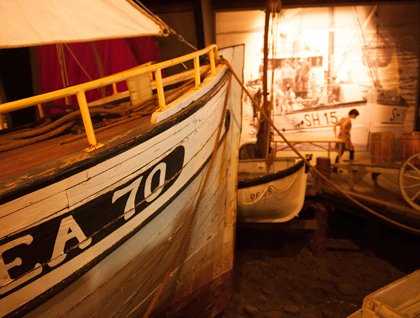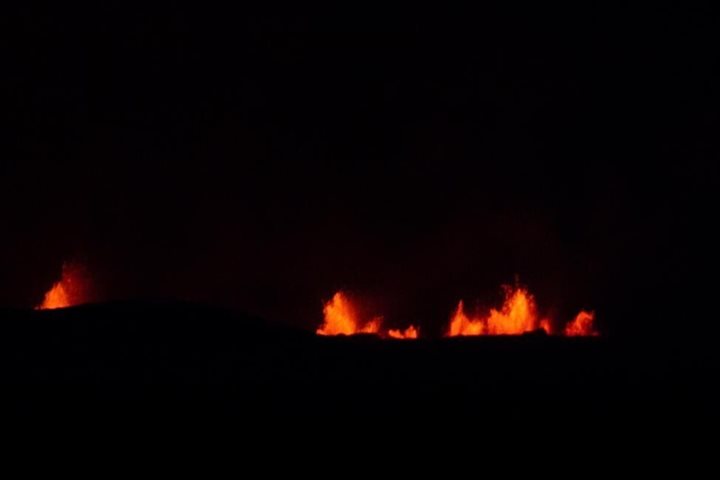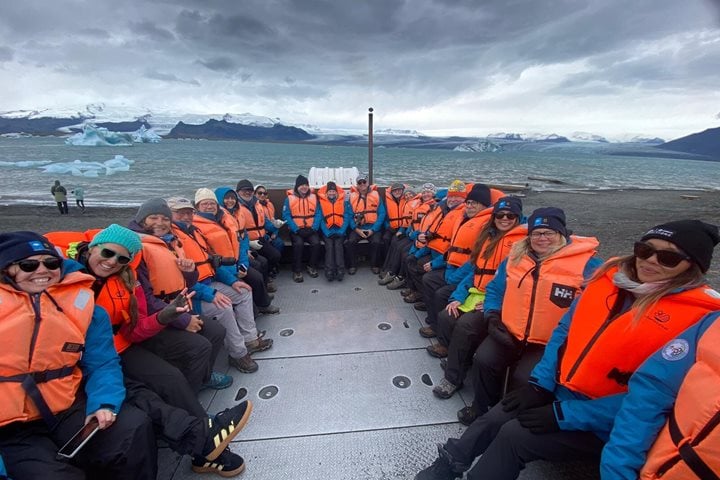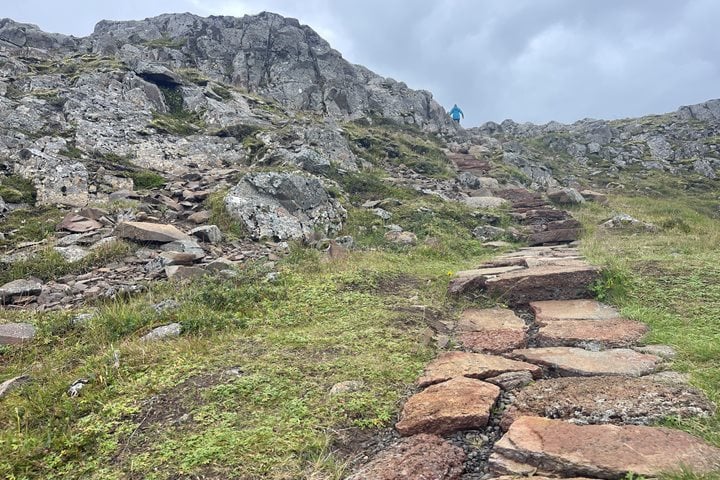We woke up to a wonderful morning in Siglufjörður, the town that used to be called “the herring capital of the North Atlantic.” It earned its reputation in the early 20th century when Norwegians and Icelanders started to catch the herring off the north coast of Iceland, sometimes in enormous quantities. Salting stations sprang up like mushrooms, the stinking smoke from the fish meal factories lay over the bay, people streamed to town in summer, the main fishing season, to earn money fast – lots of it. Siglufjörður became Iceland’s equivalent of Klondyke. And then, in the late 60s, the herring suddenly disappeared, mainly due to overfishing. The adventure was over.
Our activities started when Aníta, curator of the famous Herring Museum, came on board to give us a briefing about what would be awaiting us in town. Then we set off to the museum, a few minute’s walk from the ship. There we watched a show with the “herring girls” cutting and gutting the herring and thereafter putting it into wooden barrels with lots of spiced salt between layers of fish, just like in the good old days. While doing this they gossiped about the ball last night, who had been seen disappearing with whom – and all the while shouting to the men to bring more salt, more salt. Then they sang a few “herring songs” and started dancing with accordion accompaniment. Some of us took part in the fun with them. After this we had a tasting of the pickled and spiced herring as well as Icelandic schnapps called Brennivín (“burnt wine,” literally). The three museum buildings made the past come alive with a diorama of information on the different aspects of the herring industry; a great museum.
When we came back on board again, Grace, our geologist, gave a very informative talk that she called “Shaking things up with Plate Tectonics: Mountains, Volcanoes, and Earthquakes Explained.”
After lunch our guest speaker, Tim Severin, told us about his adventures on The Brendan Voyage, in 1976, showing the film and commenting about each detail of the quest. It was a rare opportunity to hear from a man who was the architect of the entire expedition. We are all interested in the next chapter of his amazing journey.
In the afternoon we arrived in Akureyri, the largest town in north Iceland with 18,000 inhabitants. We divided into different groups to explore town in our own way. Some of the highlights included the botanical garden, the church and a pedestrian-only street with charming coffee shops, eateries and gift shops. The more adventurous of our group took to horseback as they endeavored to connect with one of Iceland’s most famous residents, the Icelandic horse.
All in all, a beautiful day filled with cultural interaction and anticipation for tomorrow’s venture in to Iceland’s hinterlands.









